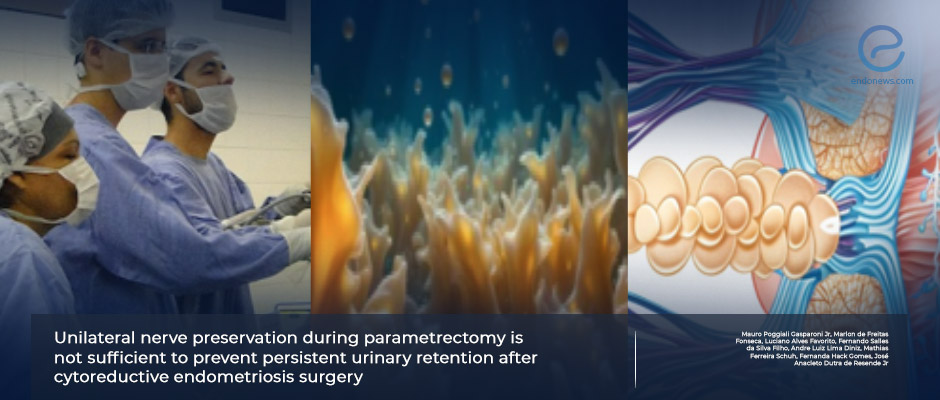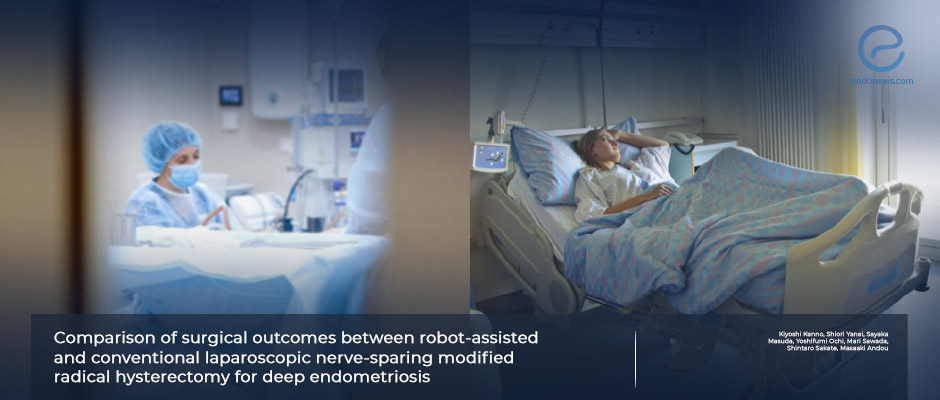Impact of Nerve Preservation During Parametrectomy on Urinary Retention in Deep Endometriosis Surgery
Deep infiltrating endometriosis (DIE) is the most advanced form of the disease, characterized by lesions penetrating deeper than 5 mm. Surgical treatment requires a meticulous approach to minimize functional complications. Deep lesions involving the parametrium, uterosacral ligaments, and anterior rectal…
Key Points Lay SummaryNerve-Sparing Surgery Safe in DIE
Robot-assisted nerve-sparing modified radical hysterectomy is associated with longer operative times and lower estimated blood loss compared to the conventional laparoscopic approach to treat deep infiltrating endometriosis (DIE), according to a new study published in the scientific journal Archives of…
Key Points Lay SummaryConventional Laparoscopy as Good as Robotic-Assisted Laparoscopy
Both conventional laparoscopy and robotic-assisted laparoscopy are associated with significant long-term symptom relief in patients with endometriosis involving the sacral plexus and sciatic nerve, according to a new study published in the International Journal of Gynecology & Obstetrics. “Although surgeons…
Key Points Lay SummaryRobot-assisted laparoscopy for deep infiltrating endometriosis of bowel
Deep infiltrating endometriosis is characterized by lesions larger than 5 mm that penetrate the peritoneum or invade the muscular layer of adjacent organs, affecting over 20% of women with endometriosis. Bowel involvement occurs in 5-12% of cases and may present with…
Key Points Lay SummaryCurrent practice in robotic surgery for deep-infiltrating endometriosis
Today, surgical excision of endometriotic lesions is the only cytoreductive procedure for managing endometriosis. Hormonal treatment may partly relieve the symptoms, but it suppresses rather than cytoreduction of the disease. Minimally invasive surgery is usually the most preferred method due…
Key Points Lay SummaryRobotic Surgery For Endometriosis
Robotic surgery is an option for the treatment of severe endometriosis, according to the results of a preliminary comparative study published in the Journal of Minimally Invasive Gynecology. However, the approach is associated with higher costs. “Next studies should identify…
Key Points Lay SummaryA non-invasive test to determine the risk of endometriosis in women having chronic pelvic pain or unexplained infertility
Women having endometriosis may suffer from chronic pelvic pain and/or infertility, both of which diminish the quality of life in these women. Minimalization of the time between the onset of symptoms and diagnosis is essential to improve patients’ lives. However,…
Key Points Lay SummaryNew scientific evidence supporting robotic surgical approach to ureteric endometriosis
Surgical treatment of ureteral endometriosis aims to relieve urinary obstruction besides preserving renal functions. In accomplishing these, the best method of surgical approach is still unclear. Andrea Giannini and her colleagues from the University of Pisa, Italy conducted a retrospective…
Key Points Lay SummaryLong-term Use of Dienogest can Prevent Recurrence of Endometriomas
Chandra et al. recently published a paper titled “Clinical experience of the long-term use of dienogest after surgery for ovarian endometriomas” in Obstetrics and Gynecology Science. The publication explored the benefits and repercussions associated with long-term use of dienogest, a…
Key Points Lay SummaryHow to Minimize the Costs Associated with Endometriosis Care
Paolo Vercellini, Maria Pina Frattaruolo and Laura Buggio, from Milan, Italy, recently published an editorial titled “Toward minimally disruptive management of symptomatic endometriosis: reducing low-value care and the burden of treatment” in Expert Review of Pharmacoeconomics & Outcomes Research. The…
Key Points Lay Summary
 By Selma Oransay
By Selma Oransay

 By Özge Özkaya
By Özge Özkaya





 By Hale Goksever Celik
By Hale Goksever Celik

 By Nasuhi Engin Aydin
By Nasuhi Engin Aydin

 By Kasthuri Nair
By Kasthuri Nair
